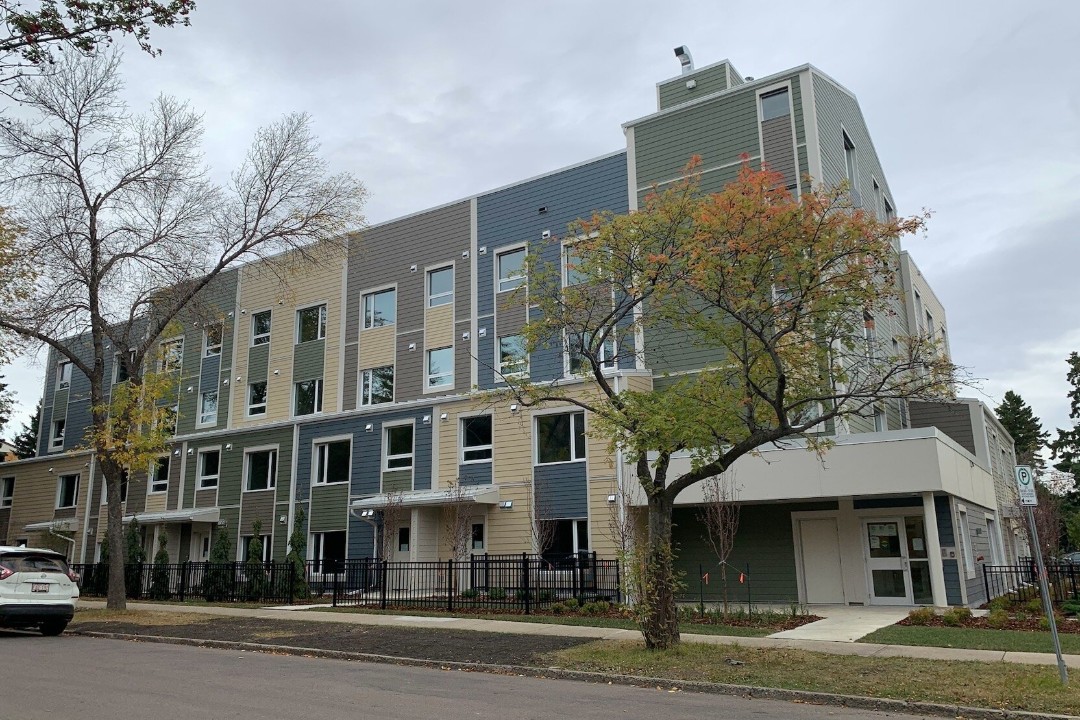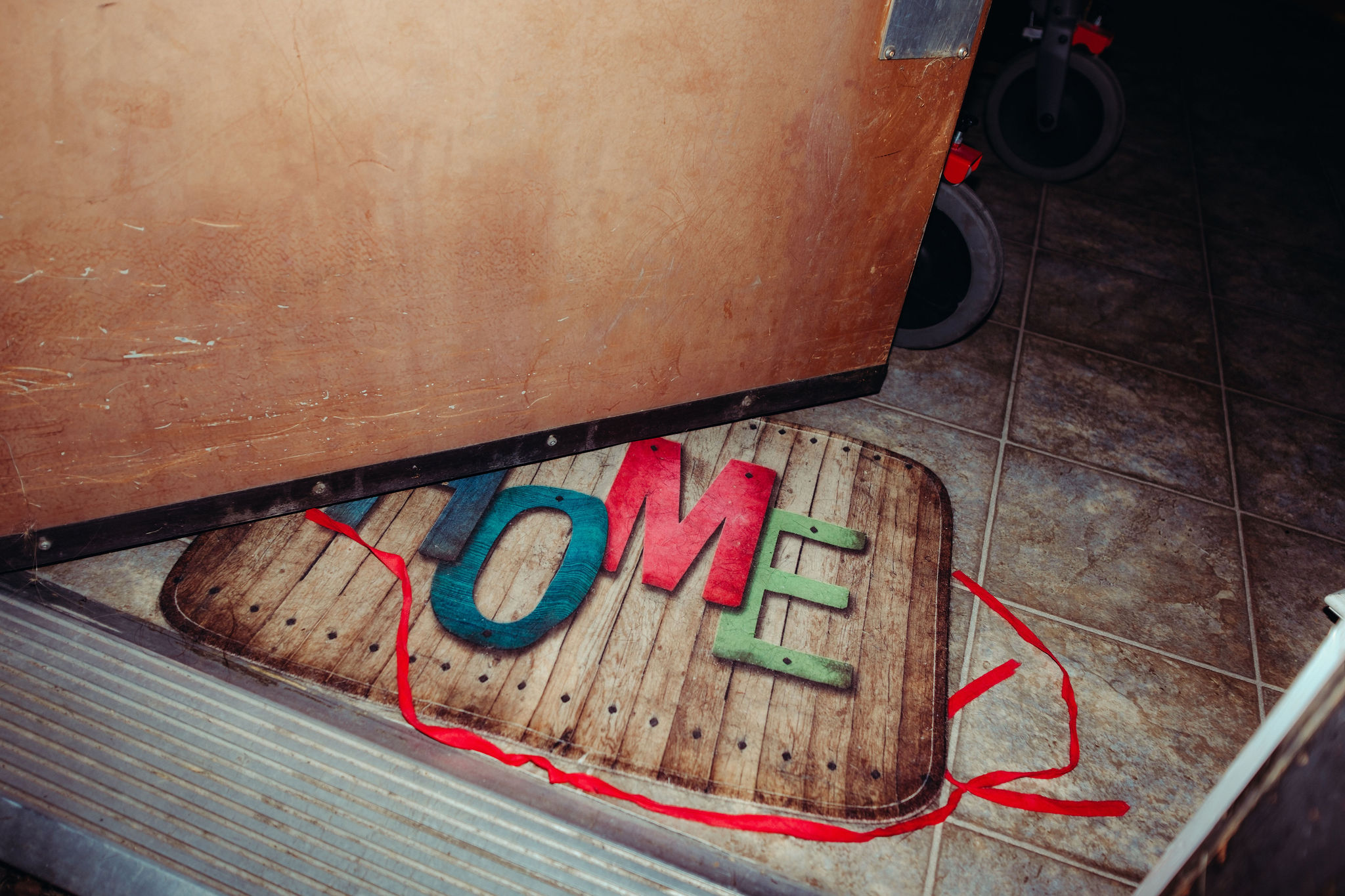On Nov. 27, Edmonton city council's executive committee endorsed investing $8.3 million from the city's Indigenous Housing Grant into three Indigenous-led housing projects from NiGiNan Housing Ventures, Yellowhead Tribal Council, and Métis Capital Housing Corporation. If approved at a future city council meeting, the projects will add a total of 93 new housing units in the Elmwood Park, Calder, and Belvedere neighbourhoods.
Meanwhile, in late November, Mayor Amarjeet Sohi released a joint public statement with the Confederacy of Treaty Six First Nations that followed a 2023 letter of intent. That letter committed the city to create more Indigenous-led housing, "which includes the Confederacy of Treaty Six First Nations being directly involved in decision-making and activities related to housing for its members in an urban setting."
While the 93 new units and the new agreement will undoubtedly help, they confront a housing challenge that can only be described as wicked. The number of people without stable housing in Edmonton is growing, after years of decline. About 4,700 people were living without stable shelter in Edmonton in September, an increase of nearly 2,000 from the same time last year, according to Homeward Trust's point-in-time count. More than 70% of Indigenous people here originate from communities outside the city, nearly 60% of people experiencing homelessness here identify as Indigenous, and one in three Indigenous households that rent here are in core housing need.
As Edmonton enters an election year, then, it's clear that more of its residents are struggling to find adequate housing than ever before, and most acutely within the Indigenous communities that make up 6.2% of the region's population. To find out why this is happening, what's working, and what needs to be improved, Taproot spoke to experts who work in Indigenous-led housing across Edmonton.
Why Indigenous people in Edmonton face housing challenges
History offers the largest part of the answer to why this is happening. What is now Edmonton was, as recently as 150 years ago, the home or meeting place for many different Indigenous nations. Treaty 6, signed in 1876 between the federal government and chiefs representing the Nêhiyaw, Nakoda Oyadebi, and Ojibwe nations (many others joined later through adhesions) partially formalized this relationship in Canadian law. But though the treaty was ostensibly an agreement for Canada to help Indigenous nations transition to an agricultural economy, create land reserves and schools, and provide healthcare, help during famine, and annuities, it was ultimately used to enable settlement.
Canada enticed settlers with the Dominion Lands Act of 1872. For $10, settlers got 160 acres of land, and they came by the tens of thousands. By 1891, rapid settlement and over-hunting had effectively extinguished the plains bison, and several Indigenous nations faced starvation, including the Papaschase Nation. That nation, whose people lived in what is now Mill Woods in Edmonton, tells its history of being dispossessed of land as Canada allowed its people to starve, forcing many to accept scrip, or the extinguishment of their claim to land, in exchange for relief. "It was basically all fraud that was committed," Papaschase Chief Calvin Bruneau said in a 2021 interview.
Experts told Taproot that further answers to why are found in Edmonton itself. "Edmonton is an extremely unique community in that we have a growing population of unhoused but we also have a number of different programs and services that have brought people here," said Keri Cardinal, chief executive officer of NiGiNan Housing Ventures, one of the largest providers of Indigenous-led housing in the city. The magnets include hospitals, universities, colleges, and justice facilities. People are pulled here for varying reasons, she said, and can end up without shelter. "Sometimes they get left behind here, or sometimes they ... get stuck."
It's difficult for the City of Edmonton to solely fix a challenge that occurs within its boundaries, due to its limited resources and fledgling relationships with Indigenous nations, which have historical legal and fiscal relationships with the federal and provincial governments (acting on behalf of the Crown). The city has nonetheless worked for a significant time to move the needle. Its most recent work includes creating an Indigenous Relations Office, signing agreements with multiple nations, and building an Affordable Housing Strategy that includes actions aimed to "prioritize and incentivize" Indigenous-led housing. In 2022, a city report suggested the city should exempt these housing projects from property taxes; create rebate programs, a special permitting stream, rent subsidy programs, and new financing options; and develop its partnerships.
But while the new housing and partnerships recently announced suggests the city is making headway on its goals, some feel the problem is bigger than increasing the supply of housing. Karen Bruno, co-director of Indigenization at EndPovertyEdmonton (which will wind down its operations by the end of the year), and Cree from the Maskwacis area, told Taproot the glaring problem with the system is that it tends to work for those with the fewest challenges, and not people who use heavy drugs such as meth or suffer from schizophrenia and other complex challenges. "It's supposed to be the people who are the ones in most need (being housed), and yet we have all these people who are in the most need (who) are not being housed," Bruno said.

NiGiNan's Omamoo Wango Gamik housing in the Belvedere neighbourhood in Edmonton. The development has 42 housing units. (Supplied/NiGiNan)
What's working?
Cardinal, a member of the Bigstone Cree Nation in Treaty 8, said Edmonton's challenge may be complex but the approach she believes works is relatively simple: Indigenous-led housing.
"We focus on the solutions that we know work, which is we meet people where they're at, we provide them with that love and kindness that maybe they never had," Cardinal said.
All NiGiNan work starts with ceremony, centres on recovery, and seeks to find ways to keep people housed, Cardinal said, to explain what Indigenous-led housing means to her. On the ground, this can look like someone who was without housing for 20 years managing to remain housed through a "sober-ish" lifestyle — for example, drinking beer instead of far more potent substances, Cardinal explained.
Cardinal tells a story of another NiGiNan resident who often yelled and even threw feces at staff, who one day asked why people put up with him. The staff said because they loved him. "He said, 'That's the first time anybody's ever told me that they love me.' He'd never heard those words before."
NiGiNan's work is not centred on the idea of Housing First, a well-known term in Alberta's housing discussion that Cardinal sees as an extension of colonial thinking. "People might look at our model and say, 'You guys are Housing First.' We don't think so. We think we're Indigenous-led because ... we believe we're a very strong recovery model. Our recovery model is very much based on we meet people where they're at and build relationships with them first, especially for those that have had chronic addiction issues for decades. You can't just, you know, toss them into a treatment centre and expect that to be OK. We also deal with people that have faced extreme racism their entire life, or who grew up in foster care and are completely institutionalized. And so it's very challenging them for them to live on their own."
NiGiNan operates several housing properties across Edmonton: Ambrose Place, which opened in 2014 and has 42 housing units; Omamoo Wango Gamik, which has 42 units; McArthur Place, which opened in 2023, has 50 units, and provides housing for people with complex needs; and Pimatisiwin, a supportive housing development in the former Sands Inn that can accommodate up to 90 residents. NiGiNan is working to build more, including the $2.5 million that council's executive committee recently sent for approval, which will be used to build a 14-plex housing project with room for 56 people near its Pimatisiwin facility.
Bruno said what's working on the ground when it comes to Indigenous-led housing is that "Indigenous organizations and surrounding bands are starting to work together in partnership." This can see groups work to collectively build capacity and receive funding rather than have non-Indigenous agencies granted the same funding, she said.
Bruno said further success will come when society treats homelessness as just one part of someone's overall challenges. "Just because you give somebody home doesn't mean we can end homelessness," she said. "There's other issues around homelessness that need to be addressed." Those include the small supply of housing people can afford, slumlords, rent increases, and other challenges. They also include housing with too few bedrooms for collective cultures. "People are starting to identify that, you know, having one or two bedrooms, or even three-bedroom housing is not conducive to a huge portion of the population. Communal living is starting to be looked at a little bit more differently, especially for the Indigenous community," Bruno said.
Bruno added there's even been talk of creating small villages with tiny homes to enable this communal value.
What's challenging?
A significant portion of Indigenous people in Canada do not live on reserve but instead live in cities. All experts who spoke to Taproot talked of a growing shift that sees nations working to build housing for their members in Edmonton.
Bruno said this is a positive shift but also one that can create challenges, as funding organizations can continue the colonial practice of dividing and conquering Indigenous groups.
"It causes that division between the Indigenous organizations and bands, and that's one of the reasons why we got Indigenous Housing Collaborative together, because we recognize that there was all of a sudden this wanting to work with bands and bringing them in, and bands not knowing the politics and doing the opposite of what Indigenous organizations have been trying to do for years, and coming in and being taken advantage of by non-Indigenous organizations or politics," Bruno said, referring to an EndPovertyEdmonton initiative.
Bruno said the City of Edmonton can improve its work by allowing organizations to further partner to provide housing. "They're starting to do that little bit, but they could do more," Bruno said. "A lot of funders or different levels of government don't allow for partnerships."
She also said that the Indigenous Relations Office was created to convene and foster relationships to help different groups work together. "They've turned sort of more political than anything," she said, adding that this forces different groups to collaborate "from the side of their desks."
The drug poisoning epidemic, as Bruno prefers to call it, also has a relationship to Edmonton's housing challenge. "It's a genocide," Bruno said. "When we're dealing with Western colonized systems, you know, they're hard to break down because that's hundreds of (years of) histories of creating systems that are meant to eradicate the Indian and deal with the Indian problem. And so, some of those systems are made to purposely get rid of us."
If people dying from drug poisonings were treated like a health epidemic, as other health challenges have been in recent times, "I think they would move a lot faster on this," Bruno said.
More on Indigenous-led housing
Other Indigenous-led housing in Edmonton includes Bent Arrow Traditional Healing Society's Nikihk Housing First, Orenda House, Iskew House, and others. Edmonton 2 Spirit Society recently received $6.84 million in federal funding to build 24 supportive living homes. Native Counselling Services of Alberta has a Housing First program in Edmonton. Metis Capital Housing Corporation runs two seniors lodges, with one of them recently receiving $2.29 million from the city's Indigenous Housing Grant.
As part of Taproot's Housing Complex series, writer Eric Rice gathered some stories pertinent to the challenges described above:
- Nadine Chalifoux: 'My pain was something I could use to help others'
- Bruce Bremner: 'I had a rough, rough go there'
- Bindu Bonneau: 'There is a lot more to develop'

